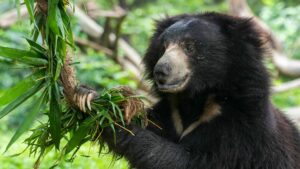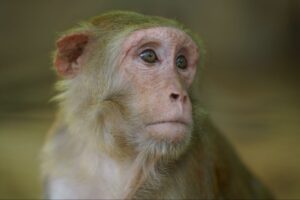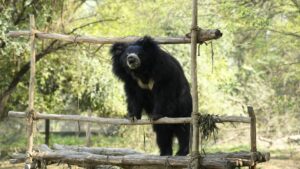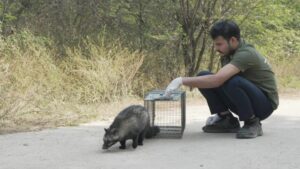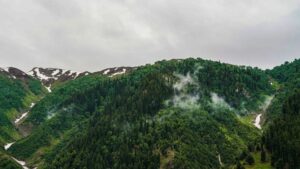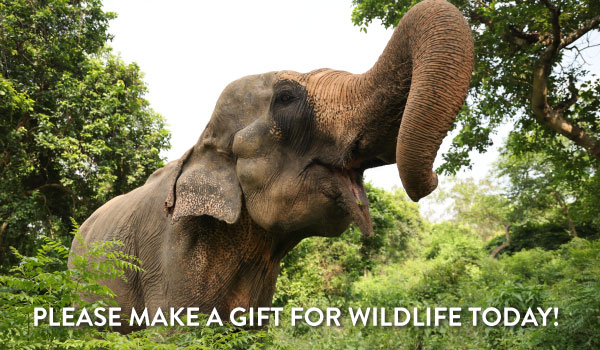Rivers may only thread across a sliver of the Earth’s surface, but they carry the weight of the planet’s biodiversity on their backs. These glistening freshwater bodies, also including lakes, wetlands and streams, nourish and nurture almost 10% of all known animal species. For them, rivers are not just water sources. They are homes, highways, pantries, nurseries, and shelters — all rolled into one. Yet these animals face a constant quiet crisis. They are under tremendous threat from pollution, dams, invasive species and the worsening effects of climate change. If immediate intervention is not made, these freshwater species might go extinct in the near future.
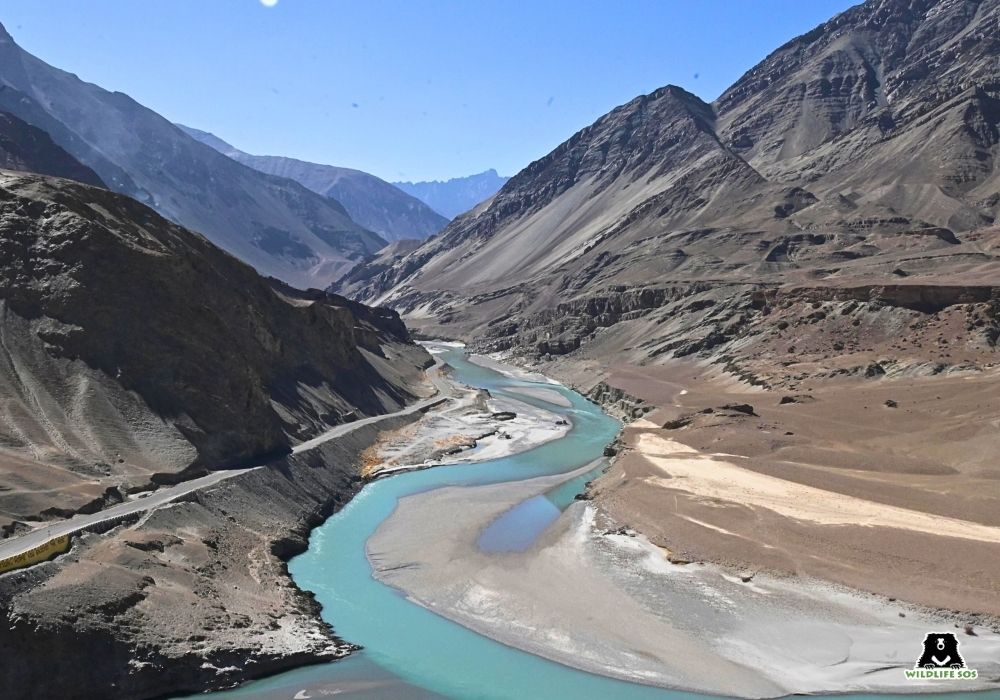
- A river meanders through the wilderness, sustaining countless species along its banks and beneath its surface. [Photo © Wildlife SOS/ Suryoday Singh Mann]
It is in the peaceful flow of the freshwater that biodiversity flourishes — be it otters darting through ripples, the sudden blue flash of kingfishers flying across streams, or even the turtles basking on the warm rocks on the river banks. And freshwater bodies provide a suitable habitat for not only these small land animals, they also play a massive role in the lives of the forest’s larger and more majestic animals like elephants, who bathe and drink in these water bodies, to hippos, rhinos and big cats who use them for their regular needs. Beneath the surface, living among stones and weeds, are countless fish and invertebrates that build entire ecosystems. Rivers are wild, ever-changing mosaics of life. They support creatures at every stage of their journeys.
-
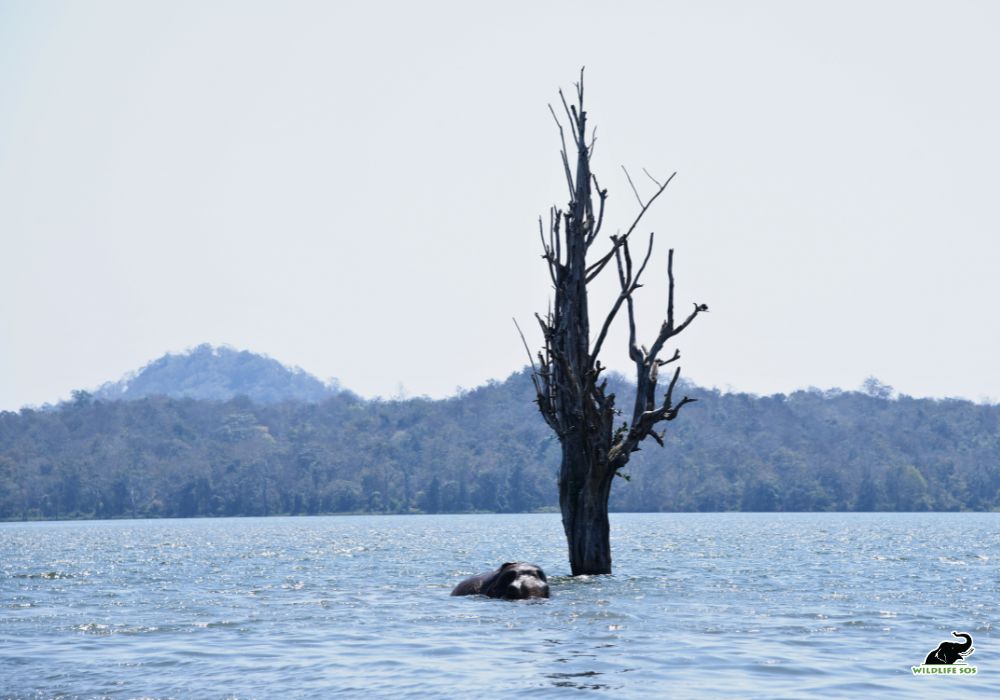
- Hidden in plain sight — a majestic wild elephant cooling off in nature’s aquatic embrace. [Photo © Wildlife SOS/ Vineet Singh]
A Ripple Effect
Various animal species depend on rivers for various purposes, and it might come as a shock to know that it is not just for the sole purpose of drinking or bathing. Salmon are known to travel upstream to spawn, an act of laying eggs. Certain frogs are known to lay their eggs in the calm puddles of lakes, rivers, floodplains, and ponds. Many animals, like river dolphins and crocodiles, spend most of their lives in the same river habitats. All these cycles and natural ways of life get severely affected and hampered when these waterways are disrupted by dams, pollution or over-extraction of water.
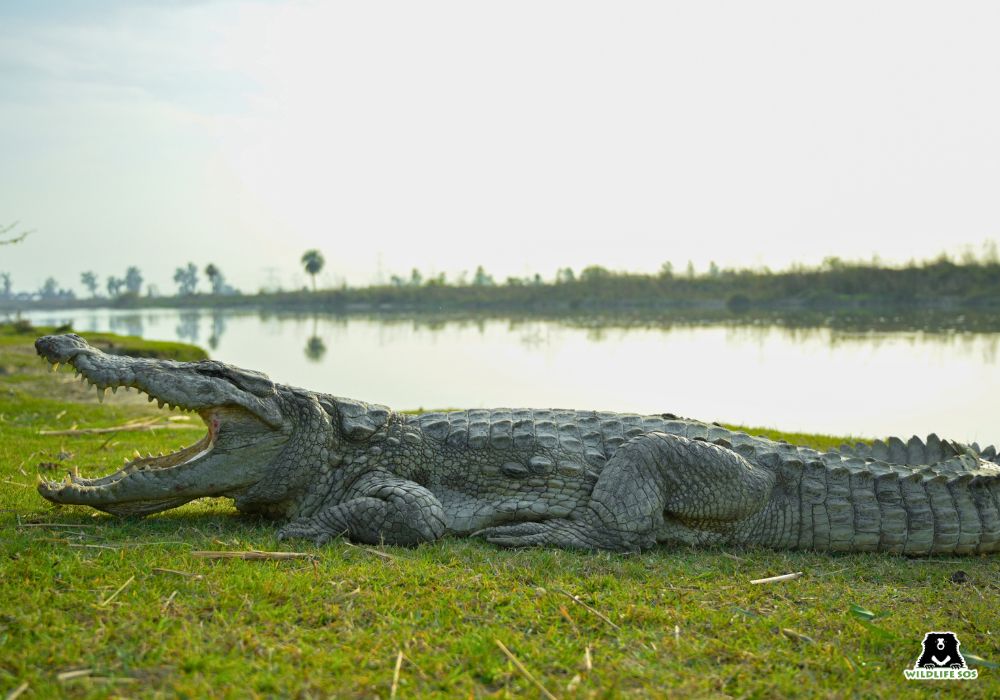
- Crocodiles spend most of their lives in rivers — they are perfectly adapted to the water where they hunt, rest, and thrive as apex predators. [Photo © Wildlife SOS/ Atharva Pacharne]
The importance of rivers does not end there; apart from being one of the primary sources of drinking water, they also connect species and landscapes. Rivers serve as vital stopovers for migrating birds, offering them food, shelter, and safe spots to nest and breed. Deep in the wilderness, predators track prey movements when they come to drink water from the rivers. So, in a nutshell, rivers weave a thread of survival for different animal species. A fine, delicate balance which only nature can preserve. It is often easy to overlook this balance and ignore it, unless the web starts to disentangle and everything begins to fall apart.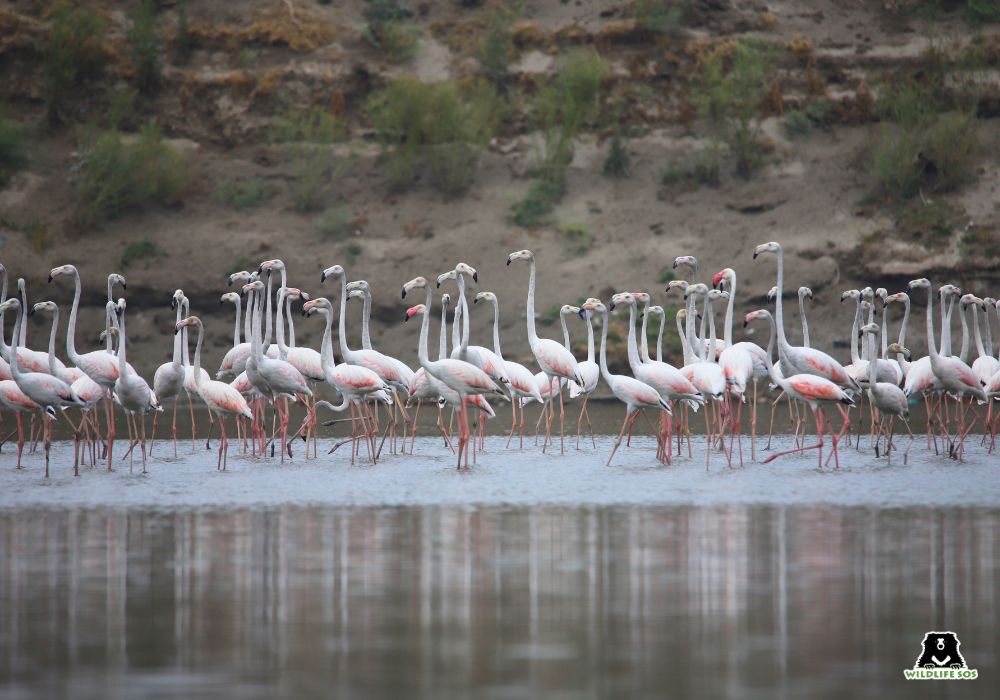
- Flamingoes flock to wetlands and floodplains, feeding on algae and crustaceans in the shallow waters they depend on to thrive. [Photo © Wildlife SOS/ Shresatha Pachori]
Unfortunately, disruption is already underway. Freshwater habitats are some of the most threatened on Earth. Pollution from industries and cities turns clear waters into toxic sludge. Invasive species introduced intentionally or accidentally overrun native fish and amphibians. Dams block the natural flow, preventing fish from reaching spawning grounds and altering the sediment loads that rivers carry downstream. Climate change, with its unpredictable rainfall and temperature extremes, only deepens the crisis.
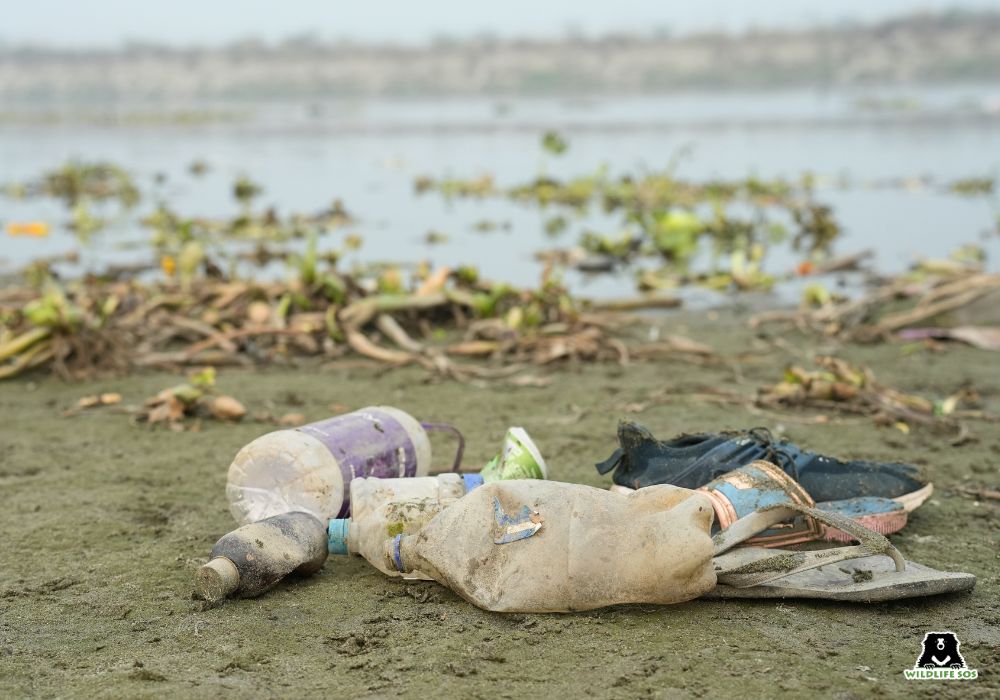
- Rivers choked with plastic waste lose their ability to sustain life, turning vibrant ecosystems into polluted, lifeless streams. [Photo © Wildlife SOS/ Mradul Pathak]
But this problem is just not about numbers or data points or even facts. It is about the silent disappearance of wildlife that we will never be able to witness. A frog that once leapt around on the banks of a river, the river dolphin whose calls echoed through the waves, the fish that journeyed upstream every year, until the year it didn’t, and everything became still. The wilderness is losing its grandeur, and we are the silent spectators.
Restoring Hope
But all is not lost! There is still hope left! People around the world are finding and developing ways to work with rivers instead of against them. They are much more aware and conscious of the adverse effects of river pollution. Removing old dams is a new method of helping migratory fish to return. In USA, removing the dam on the Elwha River led to the return of the salmon after a hundred years. The Penobscot River Restoration Project in Maine removed two dams, built a bypass around a third, and reopened 2,000 miles (over 3,200 km) of river habitat, enabling the remarkable return of fishes like the sturgeon, striped bass, and the Atlantic salmon. In Indonesia, acoustic pingers placed on fishing nets help in saving river dolphins from getting caught in the, as the sound from these pingers warns river dolphins to stay away. These success stories show how rivers and their wildlife can recover when we help restore their natural balance.
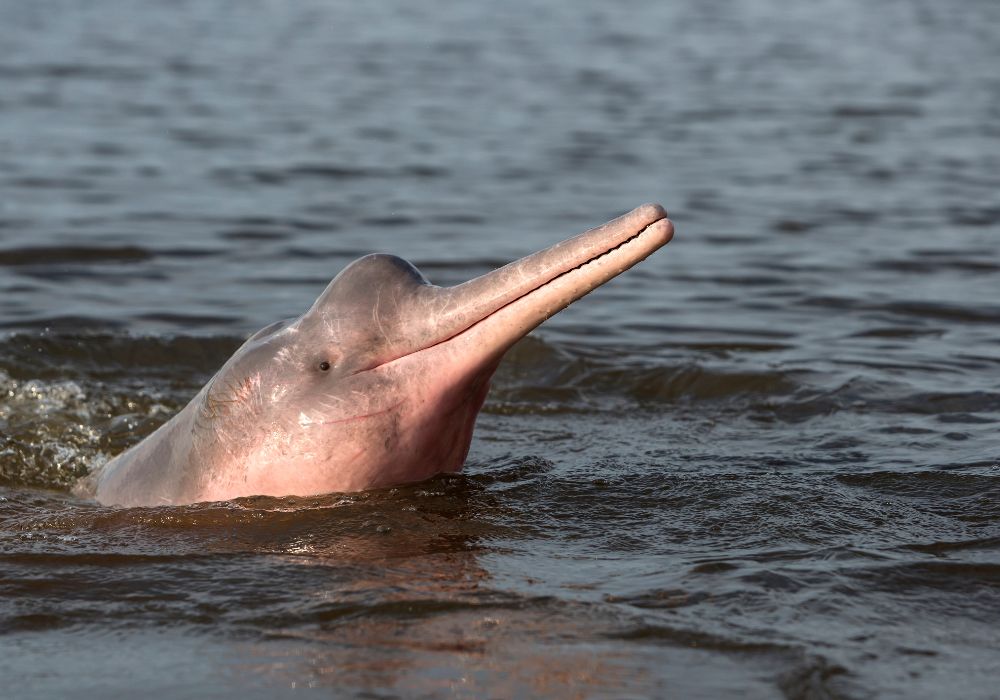
- Gliding through murky waters are river dolphins, the living symbols of hidden lives rivers sustain. [Photo © Canva]
Clean rivers can support life that depends on it, and in India too, projects on river conservation are ongoing. A large sum has been allocated to the Namami Gange Programme for the improvement of water quality through sewage management to conserve Ganga, the country’s sacred river. In 2024, The Ocean Cleanup based out of Netherlands and Bharat Clean Rivers Foundation from India launched a partnership to tackle plastic choking Mumbai’s rivers before it reaches the sea. The ten-year project further aims to restore these lifelines by intercepting waste and bringing data-driven solutions to some of India’s most polluted waterways.
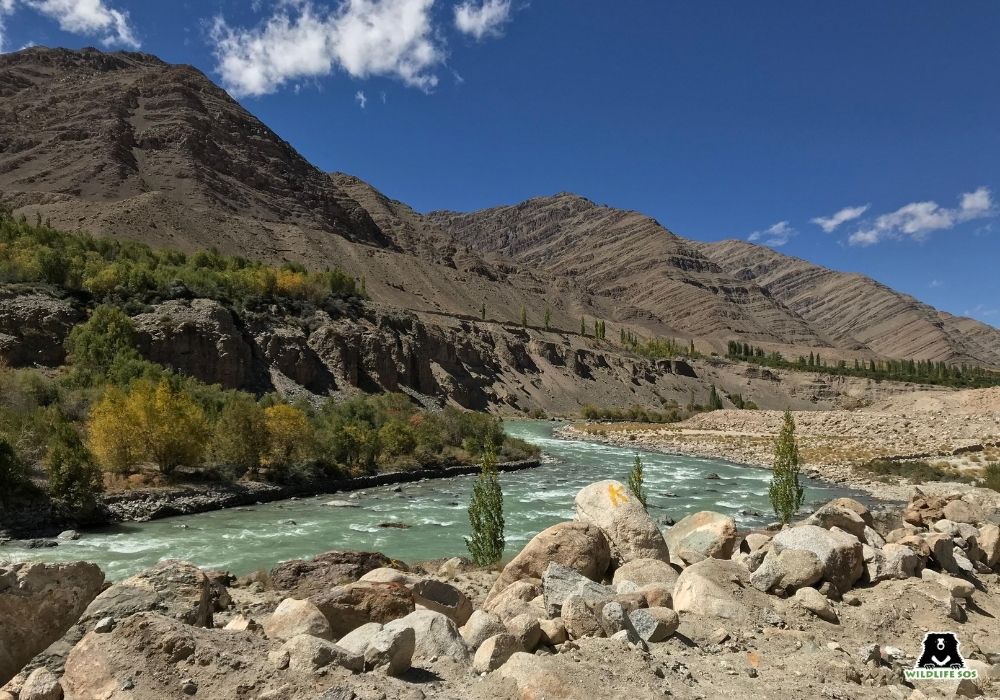
- When rivers run clean, they breathe life into the wilderness, nurturing species above and below the surface. [Photo © Wildlife SOS/ Suryoday Singh Mann]
With rising alterations in river systems and rapidly changing climate, devastating floods and overflowing rivers are becoming dangerously frequent across the country. While human beings suffer from immense damage, there are dedicated efforts made by wildlife rescue teams to save stranded animals — a stark reminder of how anthropogenic pressure can dreadfully shake the long, interconnected stability of ecosystems. Many may not know that a simple solution to controlling floods and soaring temperatures exists — and it’s by planting native trees along the banks of the rivers. These trees can absorb and contain water, keep the air cool, and sustain excellent habitats for fish, birds and insects.
When rivers thrive, so does life.
Protecting rivers means protecting the pulse of the wild. It begins with awareness. By reminding ourselves that rivers are not just resources, but living systems. Remember that when we lose a river, we don’t just lose water. We lose the memory of landscapes it shaped and lives it sustained. We lose the voices of the wildlife it nurtured and the people who speak for it. We lose life itself. And so, we must protect them not just for biodiversity, but for the deep, ancient connection between water and life. Water is an essential source for survival, which means rivers are not just sights to admire. They are lifelines. Let’s keep them flowing.
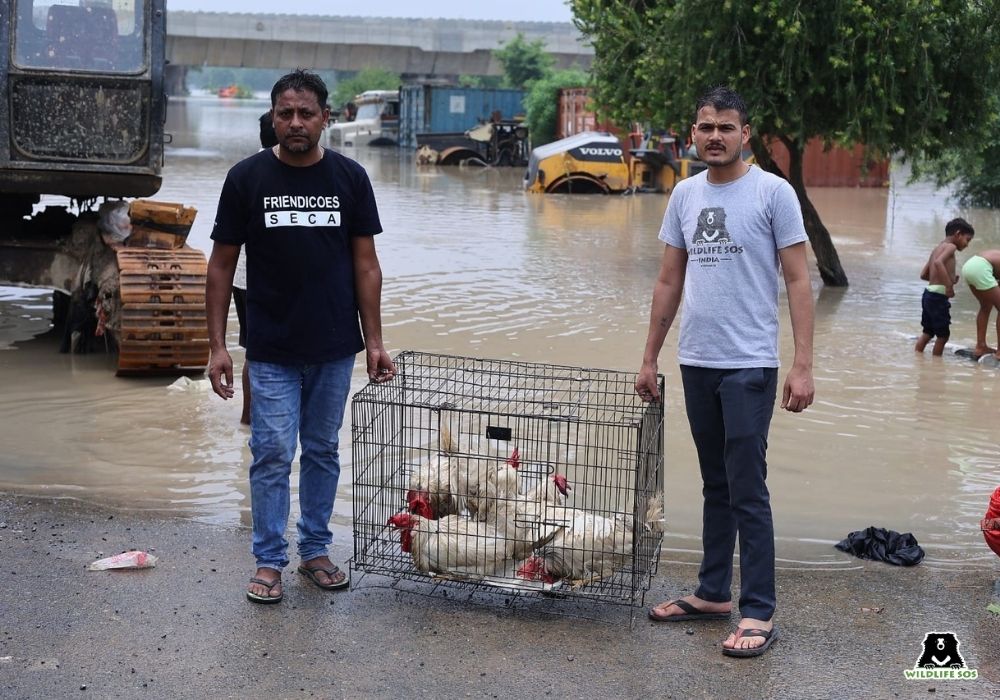
- Rivers face the consequences of a rapidly changing climate too: In 2023, heavy rainfall caused the Yamuna River to overflow, and the Wildlife SOS team, along with Friendicoes, rushed to rescue the animals that were caught in the floods. [Photo © Wildlife SOS]
Wildlife is essential to the health of our rivers and the ecosystems that depend on them. The delicate balance between animals and their habitats is what Wildlife SOS works tirelessly to protect. Our Rapid Response Units are active 24X7 to respond to situations that may have dire consequences if not addressed well in time. These rescues are more than just emergency responses; they’re part of our continued mission to protect urban wildlife and highlight the health of rivers. But to be able to do so, we need the support of thoughtful citizens. By becoming a donor towards our initiatives, you help us in our mission to conserve wildlife and their habitats.
Feature image: Wildlife SOS/ Mradul Pathak


